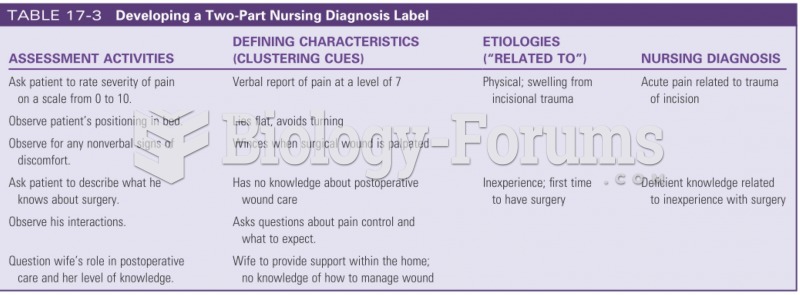Answer to Question 1
A, B, C, D, E
Correct: A, B, C, D, E. Culture: a woman's sociocultural roots influence how she perceives, interprets, and responds to pain during childbirth. Some cultures encourage loud and vigor-ous expressions of pain, whereas others value self-control. The nurse should avoid praising some behaviors (stoicism) while belittling others (noisy expression). Anxiety and fear: extreme anxiety and fear magnify sensitivity to pain and impair a woman's ability to tolerate it. Anxiety and fear increase muscle tension in the pelvic area, which counters the expulsive forces of uterine contractions and pushing efforts. Previous experiences with pain: fear and withdrawal are a natural response to pain during labor. Learning about these normal sensa-tions ahead of time helps a woman suppress her natural reactions of fear regarding the im-pending birth. If a woman previously had a long and difficult labor, she is likely to be an-xious. She may also have learned ways to cope and may use these skills to adapt to the present labor experience. Preparation for childbirth: this does not ensure a pain-free labor. Preparation does reduce anxiety and fear. It also allows a woman to rehearse for labor. Sup-port systems: an anxious partner is less able to provide help and support to a woman during labor. A woman's family and friends can be an important source of support if they convey realistic and positive information about labor and delivery.
Answer to Question 2
A
Kegel exercises, tightening and relaxing the pubococcygeal muscle, will improve control of the urinary sphincter.







